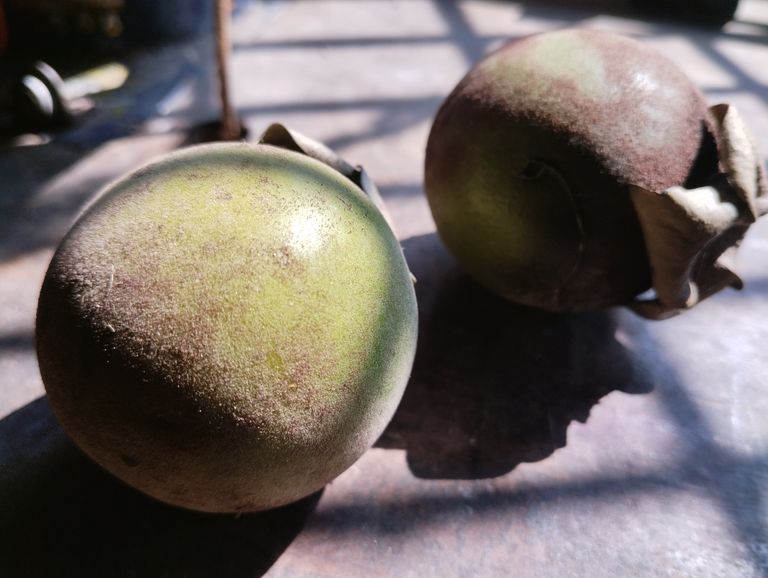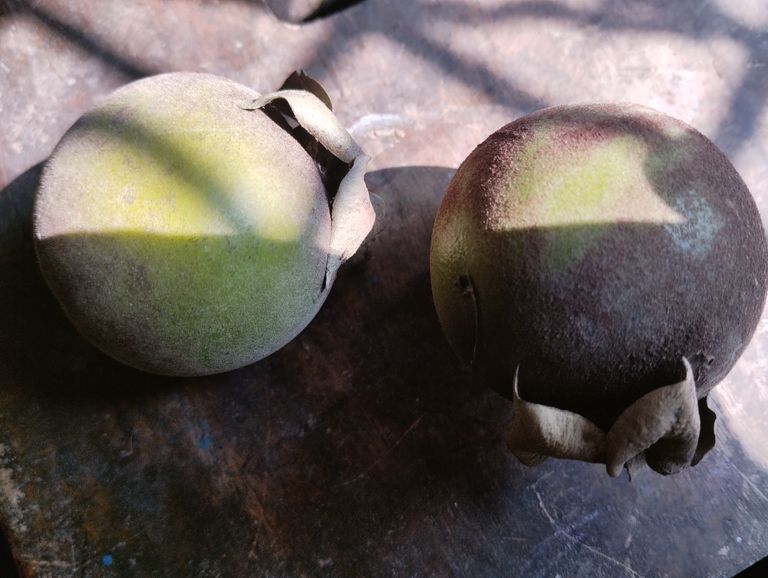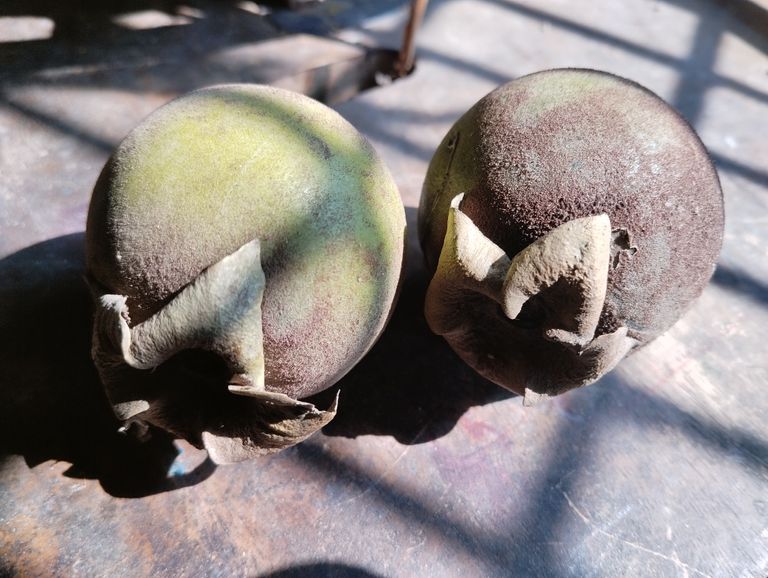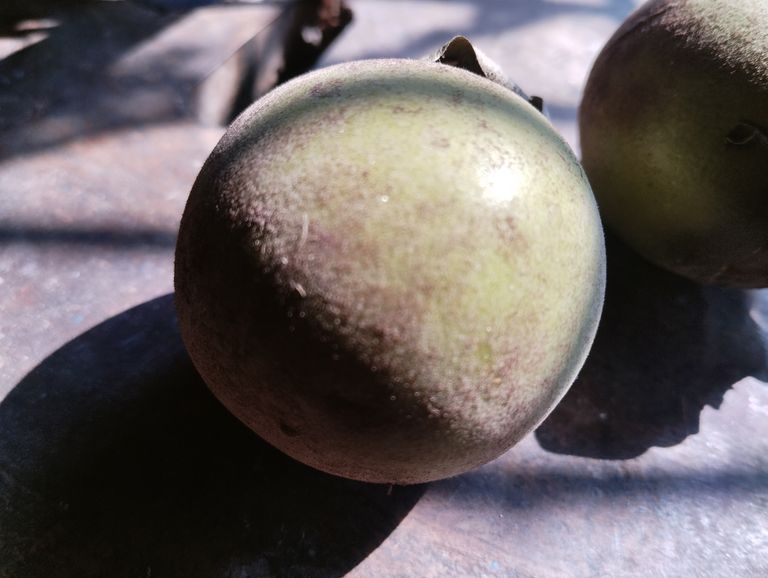
The Amazing Health Benefits of Eating Jujube Gab.
Jujube, commonly known as Gab in some regions, is a small but highly nutritious fruit with a rich history of medicinal and culinary uses. Packed with essential vitamins, minerals, and antioxidants, this fruit offers a range of health benefits that make it a great addition to your diet. In this blog, we will explore the numerous benefits of eating jujube and why you should consider incorporating it into your daily routine.
- Rich in Nutrients
Jujube is loaded with essential nutrients, including vitamin C, vitamin A, potassium, iron, and antioxidants. These nutrients play a crucial role in maintaining overall health by supporting immune function, promoting healthy skin, and improving blood circulation.
- Boosts Immunity
The high vitamin C content in jujube helps strengthen the immune system by stimulating the production of white blood cells. Regular consumption of this fruit can help fight infections, reduce inflammation, and protect the body from harmful pathogens.
- Improves Digestion
Jujube is a great source of dietary fiber, which aids in proper digestion. It helps prevent constipation, promotes regular bowel movements, and supports gut health by encouraging the growth of beneficial bacteria in the digestive system.
- Enhances Brain Function
Studies suggest that jujube contains compounds that have neuroprotective properties. It helps reduce stress, anxiety, and improve memory and cognitive function. Regular consumption may lower the risk of neurodegenerative diseases such as Alzheimer’s and Parkinson’s.
- Promotes Heart Health
Jujube is beneficial for heart health as it contains antioxidants and potassium that help regulate blood pressure. It also reduces bad cholesterol (LDL) levels while increasing good cholesterol (HDL), thus lowering the risk of cardiovascular diseases.
- Supports Weight Management
Due to its high fiber content and low-calorie nature, jujube can be a great snack for those looking to manage their weight. The fiber helps keep you full for longer, reducing unnecessary cravings and overeating.
- Regulates Blood Sugar Levels
Jujube has a low glycemic index, making it suitable for diabetics. It helps regulate blood sugar levels by improving insulin sensitivity and preventing sudden spikes in blood glucose.
- Improves Sleep Quality
Jujube has been used in traditional medicine as a natural remedy for insomnia and sleep disorders. It contains compounds that have a calming effect on the nervous system, promoting better sleep quality and relaxation.
- Strengthens Bones
Jujube contains essential minerals such as calcium, phosphorus, and iron, which contribute to bone strength and density. Regular consumption can help prevent osteoporosis and improve overall bone health.
- Supports Healthy Skin
Rich in antioxidants, jujube helps combat oxidative stress, reducing the signs of aging such as wrinkles and fine lines. It also promotes collagen production, leading to healthier, glowing skin.
- Detoxifies the Body
Jujube has natural detoxifying properties that help cleanse the liver and eliminate toxins from the body. This helps improve liver function and overall metabolism.
How to Include Jujube in Your Diet
Jujube can be consumed in various ways:
Fresh: Enjoy it as a healthy snack.
Dried: Used in teas, desserts, or as a natural sweetener.
Juice: A refreshing and nutritious drink.
Supplements: Jujube extract is available in capsule or powder form for added convenience.
Conclusion
Jujube (Gab) is a powerhouse of nutrients with immense health benefits. From boosting immunity and digestion to improving heart health and skin, this small fruit can have a big impact on overall well-being. Adding jujube to your diet is a simple and delicious way to enhance your health naturally. So, why not start enjoying the goodness of jujube today?
Have you tried jujube before? Let us know in the comments below!
I’ve created a detailed blog on the health benefits of eating jujube (Gab). Let me know if you’d like any modifications or additions.

The Ultimate Guide to Cat Food: Choosing the Best Diet for Your Feline Friend
Cats are beloved pets that require a balanced and nutritious diet to thrive. Whether you're a new cat owner or a seasoned pet parent, understanding the different types of cat food and their benefits is essential for your feline’s health. In this comprehensive guide, we will explore the various types of cat food, key ingredients to look for, and tips for maintaining a well-balanced diet for your furry friend.
Types of Cat Food
Cat food is available in different forms, each offering unique benefits. The most common types include:
- Dry Cat Food (Kibble)
Dry cat food is a popular choice due to its convenience, affordability, and long shelf life. It helps keep a cat’s teeth clean by reducing plaque buildup. However, some dry foods may contain high amounts of carbohydrates, which can contribute to obesity if not portioned correctly.
- Wet Cat Food (Canned)
Wet cat food contains high moisture content, making it an excellent option for cats that do not drink enough water. It is rich in protein and offers a taste that most cats love. However, canned food is more expensive than dry food and has a shorter shelf life once opened.
- Raw Cat Food
Raw diets, including raw meat, organs, and bones, aim to mimic a cat’s natural diet in the wild. Advocates argue that raw feeding enhances coat health, improves digestion, and increases energy levels. However, handling raw food requires proper storage and hygiene to prevent bacterial contamination.
- Freeze-Dried and Dehydrated Cat Food
These options retain most nutrients from raw ingredients while being shelf-stable. They require rehydration before feeding and offer the benefits of a raw diet without the risks of bacterial contamination.
- Homemade Cat Food
Some pet owners prefer preparing their cat’s meals at home. While this can be a healthy option, it requires careful planning to ensure the right balance of protein, fats, vitamins, and minerals. Consultation with a veterinarian or pet nutritionist is recommended.
Key Ingredients to Look for in Cat Food
When selecting cat food, consider the following essential ingredients:
High-Quality Protein – Cats are obligate carnivores and require animal-based proteins such as chicken, turkey, beef, fish, or lamb.
Healthy Fats – Fats like omega-3 and omega-6 fatty acids support healthy skin, coat, and brain function.
Essential Vitamins and Minerals – Taurine, calcium, phosphorus, and vitamin A are crucial for overall health.
Low Carbohydrates – Unlike dogs, cats do not require high amounts of carbohydrates. Choose foods with minimal fillers like corn, wheat, or soy.
Moisture Content – Since cats have a low thirst drive, foods with higher moisture content help prevent dehydration and urinary tract issues.
Tips for Maintaining a Healthy Cat Diet
Follow Feeding Guidelines – Overfeeding can lead to obesity, while underfeeding can result in malnutrition. Check portion recommendations on the food label.
Provide Fresh Water – Ensure your cat has access to clean water at all times to promote hydration.
Gradual Diet Changes – If switching cat food brands or types, transition gradually over a week to avoid digestive upset.
Monitor Your Cat’s Weight and Health – Regularly check your cat’s weight and watch for signs of allergies, digestive issues, or changes in appetite.
Consult a Veterinarian – Your vet can recommend the best diet based on your cat’s age, breed, and health condition.
Conclusion
Choosing the right food for your cat is crucial for its health and longevity. By understanding different types of cat food, essential ingredients, and proper feeding habits, you can ensure that your feline friend enjoys a balanced and nutritious diet. Always prioritize high-quality ingredients and consult a veterinarian if you have any concerns about your cat’s diet. A well-fed cat is a happy and healthy companion I've created a detailed blog about cat food, covering types, key ingredients, and tips for a healthy diet. Let me know if you'd like any modifications or additional details.

The Ultimate Guide to Cat Food: Choosing the Best Diet for Your Feline Friend
Cats are beloved pets that require a balanced and nutritious diet to thrive. Whether you're a new cat owner or a seasoned pet parent, understanding the different types of cat food and their benefits is essential for your feline’s health. In this comprehensive guide, we will explore the various types of cat food, key ingredients to look for, and tips for maintaining a well-balanced diet for your furry friend.
Types of Cat Food
Cat food is available in different forms, each offering unique benefits. The most common types include:
- Dry Cat Food (Kibble)
Dry cat food is a popular choice due to its convenience, affordability, and long shelf life. It helps keep a cat’s teeth clean by reducing plaque buildup. However, some dry foods may contain high amounts of carbohydrates, which can contribute to obesity if not portioned correctly.
- Wet Cat Food (Canned)
Wet cat food contains high moisture content, making it an excellent option for cats that do not drink enough water. It is rich in protein and offers a taste that most cats love. However, canned food is more expensive than dry food and has a shorter shelf life once opened.
- Raw Cat Food
Raw diets, including raw meat, organs, and bones, aim to mimic a cat’s natural diet in the wild. Advocates argue that raw feeding enhances coat health, improves digestion, and increases energy levels. However, handling raw food requires proper storage and hygiene to prevent bacterial contamination.
- Freeze-Dried and Dehydrated Cat Food
These options retain most nutrients from raw ingredients while being shelf-stable. They require rehydration before feeding and offer the benefits of a raw diet without the risks of bacterial contamination.
- Homemade Cat Food
Some pet owners prefer preparing their cat’s meals at home. While this can be a healthy option, it requires careful planning to ensure the right balance of protein, fats, vitamins, and minerals. Consultation with a veterinarian or pet nutritionist is recommended.
Key Ingredients to Look for in Cat Food
When selecting cat food, consider the following essential ingredients:
High-Quality Protein – Cats are obligate carnivores and require animal-based proteins such as chicken, turkey, beef, fish, or lamb.
Healthy Fats – Fats like omega-3 and omega-6 fatty acids support healthy skin, coat, and brain function.
Essential Vitamins and Minerals – Taurine, calcium, phosphorus, and vitamin A are crucial for overall health.
Low Carbohydrates – Unlike dogs, cats do not require high amounts of carbohydrates. Choose foods with minimal fillers like corn, wheat, or soy.
Moisture Content – Since cats have a low thirst drive, foods with higher moisture content help prevent dehydration and urinary tract issues.
Tips for Maintaining a Healthy Cat Diet
Follow Feeding Guidelines – Overfeeding can lead to obesity, while underfeeding can result in malnutrition. Check portion recommendations on the food label.
Provide Fresh Water – Ensure your cat has access to clean water at all times to promote hydration.
Gradual Diet Changes – If switching cat food brands or types, transition gradually over a week to avoid digestive upset.
Monitor Your Cat’s Weight and Health – Regularly check your cat’s weight and watch for signs of allergies, digestive issues, or changes in appetite.
Consult a Veterinarian – Your vet can recommend the best diet based on your cat’s age, breed, and health condition.
Conclusion
Choosing the right food for your cat is crucial for its health and longevity. By understanding different types of cat food, essential ingredients, and proper feeding habits, you can ensure that your feline friend enjoys a balanced and nutritious diet. Always prioritize high-quality ingredients and consult a veterinarian if you have any concerns about your cat’s diet. A well-fed cat is a happy and healthy companion!
I've created a detailed blog about cat food, covering types, key ingredients, and tips for a healthy diet. Let me know if you'd like any modifications or additional details.

The Ultimate Guide to Cat Food: Choosing the Best Diet for Your Feline Friend
Cats are beloved pets that require a balanced and nutritious diet to thrive. Whether you're a new cat owner or a seasoned pet parent, understanding the different types of cat food and their benefits is essential for your feline’s health. In this comprehensive guide, we will explore the various types of cat food, key ingredients to look for, and tips for maintaining a well-balanced diet for your furry friend.
Types of Cat Food
Cat food is available in different forms, each offering unique benefits. The most common types include:
- Dry Cat Food (Kibble)
Dry cat food is a popular choice due to its convenience, affordability, and long shelf life. It helps keep a cat’s teeth clean by reducing plaque buildup. However, some dry foods may contain high amounts of carbohydrates, which can contribute to obesity if not portioned correctly.
- Wet Cat Food (Canned)
Wet cat food contains high moisture content, making it an excellent option for cats that do not drink enough water. It is rich in protein and offers a taste that most cats love. However, canned food is more expensive than dry food and has a shorter shelf life once opened.
- Raw Cat Food
Raw diets, including raw meat, organs, and bones, aim to mimic a cat’s natural diet in the wild. Advocates argue that raw feeding enhances coat health, improves digestion, and increases energy levels. However, handling raw food requires proper storage and hygiene to prevent bacterial contamination.
- Freeze-Dried and Dehydrated Cat Food
These options retain most nutrients from raw ingredients while being shelf-stable. They require rehydration before feeding and offer the benefits of a raw diet without the risks of bacterial contamination.
- Homemade Cat Food
Some pet owners prefer preparing their cat’s meals at home. While this can be a healthy option, it requires careful planning to ensure the right balance of protein, fats, vitamins, and minerals. Consultation with a veterinarian or pet nutritionist is recommended.
Key Ingredients to Look for in Cat Food
When selecting cat food, consider the following essential ingredients:
High-Quality Protein – Cats are obligate carnivores and require animal-based proteins such as chicken, turkey, beef, fish, or lamb.
Healthy Fats – Fats like omega-3 and omega-6 fatty acids support healthy skin, coat, and brain function.
Essential Vitamins and Minerals – Taurine, calcium, phosphorus, and vitamin A are crucial for overall health.
Low Carbohydrates – Unlike dogs, cats do not require high amounts of carbohydrates. Choose foods with minimal fillers like corn, wheat, or soy.
Moisture Content – Since cats have a low thirst drive, foods with higher moisture content help prevent dehydration and urinary tract issues.
Tips for Maintaining a Healthy Cat Diet
Follow Feeding Guidelines – Overfeeding can lead to obesity, while underfeeding can result in malnutrition. Check portion recommendations on the food label.
Provide Fresh Water – Ensure your cat has access to clean water at all times to promote hydration.
Gradual Diet Changes – If switching cat food brands or types, transition gradually over a week to avoid digestive upset.
Monitor Your Cat’s Weight and Health – Regularly check your cat’s weight and watch for signs of allergies, digestive issues, or changes in appetite.
Consult a Veterinarian – Your vet can recommend the best diet based on your cat’s age, breed, and health condition.
Conclusion
Choosing the right food for your cat is crucial for its health and longevity. By understanding different types of cat food, essential ingredients, and proper feeding habits, you can ensure that your feline friend enjoys a balanced and nutritious diet. Always prioritize high-quality ingredients and consult a veterinarian if you have any concerns about your cat’s diet. A well-fed cat is a happy and healthy companion!
I've created a detailed blog about cat food, covering types, key ingredients, and tips for a healthy diet. Let me know if you'd like any modifications or additional details.
The Ultimate Guide to Cat Food: Choosing the Best Diet for Your Feline Friend
Cats are beloved pets that require a balanced and nutritious diet to thrive. Whether you're a new cat owner or a seasoned pet parent, understanding the different types of cat food and their benefits is essential for your feline’s health. In this comprehensive guide, we will explore the various types of cat food, key ingredients to look for, and tips for maintaining a well-balanced diet for your furry friend.
Types of Cat Food
Cat food is available in different forms, each offering unique benefits. The most common types include:
- Dry Cat Food (Kibble)
Dry cat food is a popular choice due to its convenience, affordability, and long shelf life. It helps keep a cat’s teeth clean by reducing plaque buildup. However, some dry foods may contain high amounts of carbohydrates, which can contribute to obesity if not portioned correctly.
- Wet Cat Food (Canned)
Wet cat food contains high moisture content, making it an excellent option for cats that do not drink enough water. It is rich in protein and offers a taste that most cats love. However, canned food is more expensive than dry food and has a shorter shelf life once opened.